Ultra-thin screens often mean tinny, transistor radio-like audio. But you can reclaim quality sounds using a soundbar or sound base and PAT PILCHER’s here to give us all the info you need to do so.
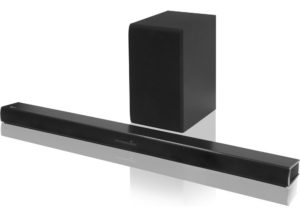 It’s one of the ironies of the age: The image produced by TVs has become incredibly life-like, but the audio of most TVs is increasingly dire, with today’s ultra-thin screens having no space for decent sized speaker drivers or resonant cavities. This leads to tinny transistor radio-like audio.
It’s one of the ironies of the age: The image produced by TVs has become incredibly life-like, but the audio of most TVs is increasingly dire, with today’s ultra-thin screens having no space for decent sized speaker drivers or resonant cavities. This leads to tinny transistor radio-like audio.
The good news is that fixing it isn’t difficult or incredibly expensive. A soundbar or sound base is probably all you’ll need to realise improvements.
They’re simple, and best of all, affordable. The trouble is, there are loads of different sound bars available, which means navigating through a sea of arcane marketing gobbledygook and hype masquerading as specifications before you can zero in on the specs and features that matter.
But, with the Witchdoctor soundbar buyer’s guide, we aim to make things a little easier.
Things To Consider When Buying A Soundbar
- There are typically two options – soundbars or soundbases. Both function almost identically but soundbars are often bundled with an optional sub, which gives them an edge in sound quality.
- Check carefully to see what sized soundbar/soundbase you need. This will vary depending on the size of your TV
- Most soundbars/soundbases use an optical input and are designed with simplicity in mind
- If possible, look for a soundbar/soundbase with a front panel display
- Most soundbars will work with your TV’s remote. Alternatively, consider a universal remote
- Stereo is the common format. Although many support faux surround effects, the effectiveness of this varies hugely. Some soundbars/bases (eg, Sonos) have optional wireless rear surround speakers
Two Types Of Gear
When it comes to low cost solutions to give you better sound from your telly, there’s two different types of soundbars – soundbars and soundbases.
Most typically, the widget you’ll probably end up looking at is a bar that is a long cabinet housing multiple speakers. It usually comes with a subwoofer and can be wall-mounted or placed in front of the TV. Soundbars appeal because they’re easy to install, cheap, and will improve your TV’s sound. Because they’re designed to sit in front of your TV they can sometimes block your TV’s IR remote sensor, so check the height. Most soundbars come with a sub to extend bass output, although often this is simply a bass module rather than a true full frequency subwoofer.
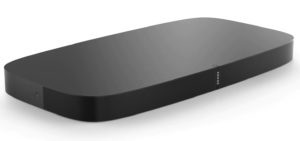 A soundbase literally acts as a pedestal for your TV, which sits on top of the speaker. They don’t block the TV’s remote sensor. Like soundbars, they’re dead easy to install and are also affordable.
A soundbase literally acts as a pedestal for your TV, which sits on top of the speaker. They don’t block the TV’s remote sensor. Like soundbars, they’re dead easy to install and are also affordable.
Their key downside revolves around the fact that televisions need a centralised pillar/foot to rest on the sound base. Nowadays, many newer TVs have smaller feet located at each end of the screen which means they may not fit on top of a soundbase properly. A worst-case scenario is that this renders some sound bases unusable with larger TVs. Most 32-40-inch TVs should fit on them. Either way, check this before buying.
Before installing spend some time with a tape measure/ruler to ensure the soundbar doesn’t block the TV’s remote sensor or that the soundbase fits properly under the TV.
Size Matters
Nearly every consumer electronics manufacturer and their goldfish make a soundbar. They come in all shapes and sizes: some are compact and consist of a left and right driver. Others can be much larger and have whole driver arrays designed to project a faux surround soundfield.
Because television screen sizes are measured diagonally, the size of a sound bar doesn’t correlate directly. Here’s a quick guide to help you find a matching soundbar that’s around the same size as your TV (give or take a little, as screen bezel sizes will vary).
To get a soundbar that’s around the same size as your TV, aim for a 38-45-inch soundbar for 42-50-inch TVs; 50-55-inch sounders for a 60-inch TV, or a 60-inch soundbar for a 70-inch screen.
If wall mounting, it’s important to note that soundbars rarely match the width and depth of your TV, even when the same brand as your TV. Check before buying if this is a big issue.
Connections
Most soundbars use a single input. The logic behind this is that by connecting all your widgets to the TV, and then your TV’s optical audio out to the sound bar, you only need switch inputs on your TV instead of having to fiddle with both your TV’s inputs and the soundbar inputs.
Most TVs have an optical audio output (also known as an SPDIF)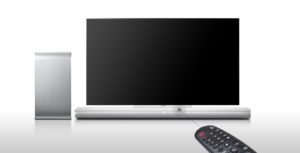 While simple to drive, this type of setup means you’re limited by the number of inputs on your TV. Adding an HDMI switcher will get around this impasse but adds extra complexity. Most TVs also downgrade incoming audio to a two-channel stereo signal.
While simple to drive, this type of setup means you’re limited by the number of inputs on your TV. Adding an HDMI switcher will get around this impasse but adds extra complexity. Most TVs also downgrade incoming audio to a two-channel stereo signal.
For surround sound audio you’ll need a 5.1 surround sound capable soundbar which connects to your TV using HDMI inputs. If you’re looking for a soundbar or soundbase with HDMI connectivity, aim for three inputs and if possibly make sure these inputs can handle 4K video signals as well as 5.1 surround audio.
No mention of connections and inputs is complete without adding Bluetooth. It is seldom talked up when it comes to soundbars but is incredibly useful. It’ll allow you to stream music from your phone/tablet whether they be iOS or Android.
Most soundbars and soundbases have optical inputs and are simple to install. HDMI equipped soundbars and soundbases are less common but will give you a lot more flexibility. If using a 4K TV, check that any HDMI inputs support HDMI 2.0 and HDCP 2.2a.
Front-panel Displays
A perennial frustration with both soundbars and soundbases is their lack of a front-panel display. This means that there’s no way of knowing if they’re powered on or how loud the volume is set to and so on.
While a front-panel display is nice to have, it’s important that it’s well-hidden and isn’t a distraction to viewing. Too many soundbars are lit up like Christmas trees with garish LEDs that can really detract from viewing. Where possible, look for a soundbar or soundbase with an intuitive display that powers down once used.
Front mounted status displays are a good thing – if they switch off after use to minimise distraction levels.
Controlling Things
Soundbars typically come with a remote, but often, the remotes feel like an afterthought and are not at all intuitive to use. Worse still, they add to the already teetering pile of remotes that most well-heeled Witchdoctor readers already own.
Many manufacturers allow you to program your soundbar so it can respond to commands from your TV’s remote, and HDMI-equipped soundbars can be driven by your TV’s remote using HDMI CEC. Should your soundbar not play nice with your TV’s remote, consider a universal remote such as the highly regarded Logitech Harmony remote.
Soundbar remotes are often fairly sub-par, but many soundbars support your TV’s remote. If all else fails, consider a universal remote.
Surround Sound
Most soundbars are technically two-channel beasts. Some brands talk up their surround capabilities but are really offering a combination of reflected sound and digital audio processing for a wider sound field. There isn’t often a lot of difference between the sound of a faux surround mode and stereo.
That said, some soundbars do have optional rear surrounds. Perhaps the best example of this is the Sonos Playbar, which can use Sonos Play One speakers as rear surround speakers.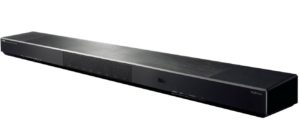 A growing number of soundbar makers have looked enviously at Sonos’s sound bar and soundbase capabilities and emulated it. This has seen brands such as LG and Samsung using Wi-Fi to connect standalone wireless rear speakers, but this adds to the overall cost of a sound bar.
A growing number of soundbar makers have looked enviously at Sonos’s sound bar and soundbase capabilities and emulated it. This has seen brands such as LG and Samsung using Wi-Fi to connect standalone wireless rear speakers, but this adds to the overall cost of a sound bar.
Dolby Atmos soundbars are also available, and with Netflix and Blu-ray offering Atmos soundtracks, the future looks bright. However, given the cost at the moment and the relatively small number of titles offering Atmos playback, buying an Atmos capable soundbar just doesn’t make a lot of sense yet.
Faux surround isn’t much better than stereo, but some soundbars support wireless rear surrounds and most come with a sub-woofer. Dolby Atmos support hasn’t achieved sufficient critical mass to warrant the investment in an Atmos capable sound bar.
Jargon Buster
- S/PDIF stands for Sony/Philips Digital Interface Format. It is a digital audio interconnect used in consumer audio equipment to output digital audio. The signal is transmitted over either a coaxial cable with RCA connectors or a fibre optic cable. S/PDIF is typically used to interconnect home theatre gear and other consumer audio equipment. S/PDIF can carry two channels of uncompressed PCM audio or compressed 5.1/7.1 surround sound. It does not support lossless formats like Dolby TrueHD as those require more bandwidth than is available.
- HDMI stands for High-Definition Multimedia Interface. HDMI is an audio/video interface for transmitting uncompressed video data and compressed or uncompressed digital audio data. It is commonly used in TVs, computer monitors, video projectors and a growing number of digital audio devices.
- Faux surround attempts to trick the listener into thinking that there are more sources of sound than are in use. Faux surround technologies typically simulate true surround audio using a combination of several speakers, reflected sound and digital signal processing. Faux surround is designed to appeal to consumers wanting an immersive sound but not the large number of speakers required to achieve it.
- Subwoofer, or sub. This is a speaker designed to reproduce low-frequency audio (bass). Most subwoofers output about 20–200 Hz. Subwoofers are intended to augment the low frequency range of speakers outputting mid-range and treble in higher frequency bands.
- Rear surround refers to audio channels in surround sound multichannel audio. They primarily serve to deliver ambience and diffuse sounds in a film or music soundtrack. The first use of surrounds was Disney’s Fantasound from the 1930s which used a surround channel. The format became more prominent thanks to Dolby Surround in the early 1980s, which used a single rear surround channel outputted using two rear speakers. More recent formats such as Dolby Digital and DTS use multiple independent channels for surround output.

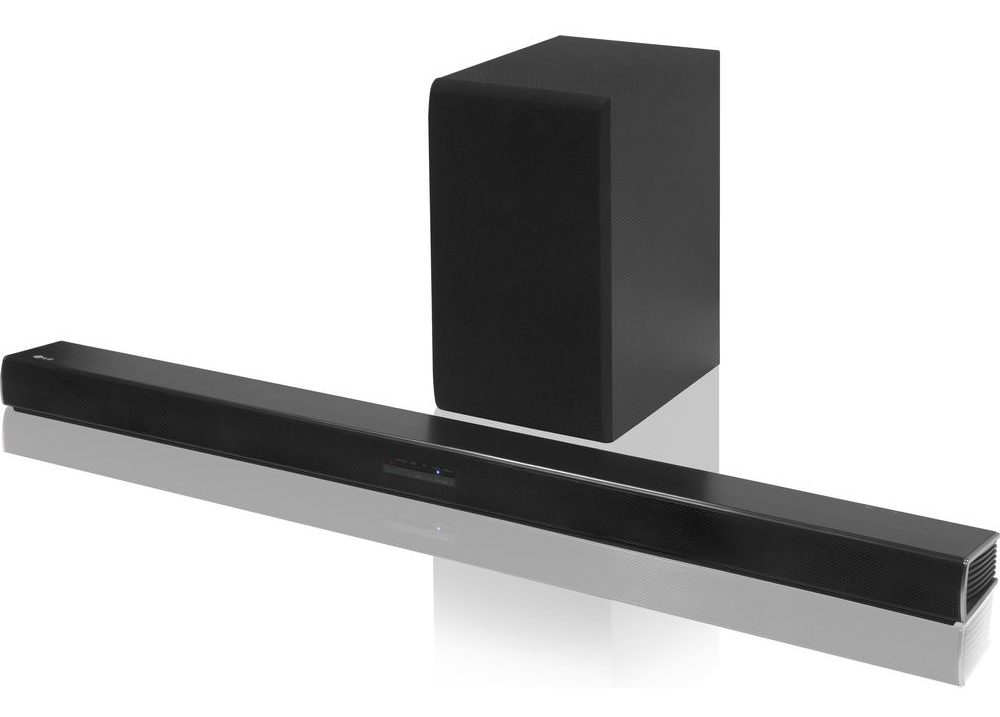

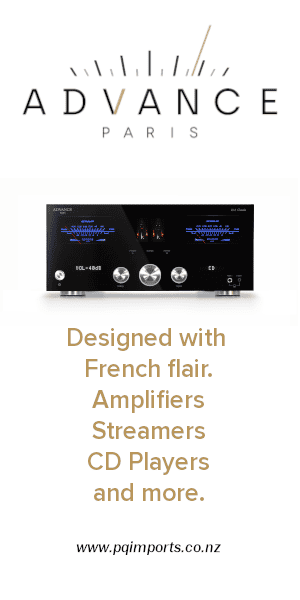


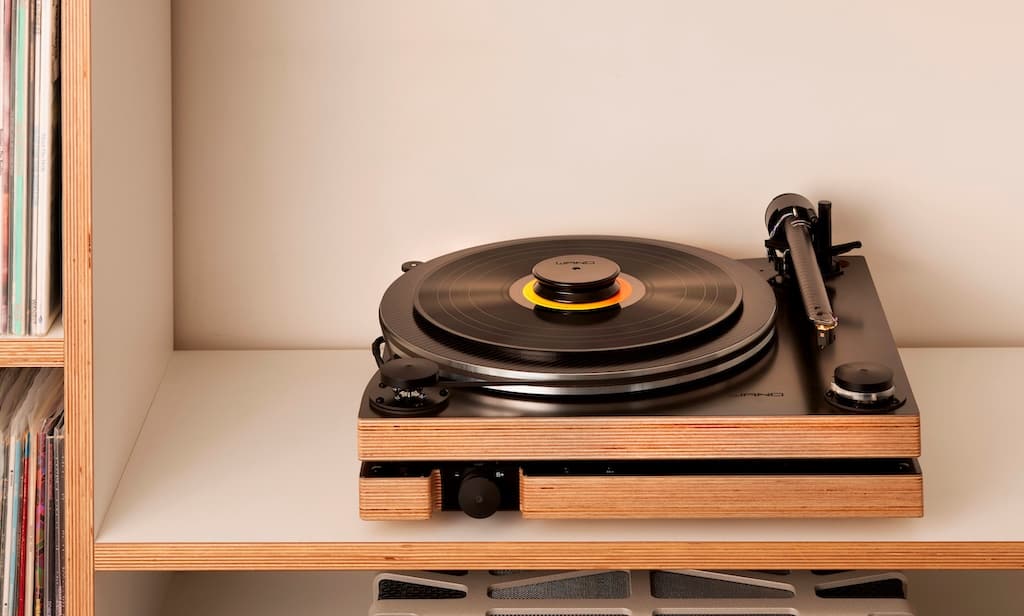
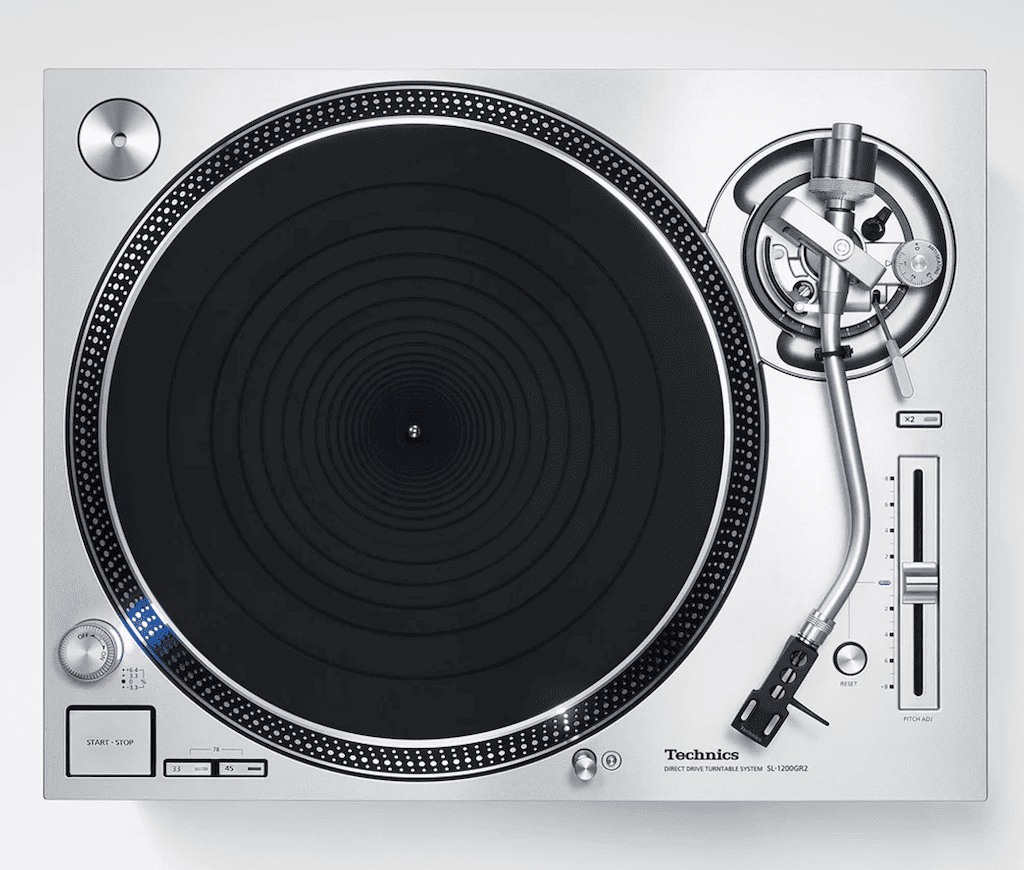

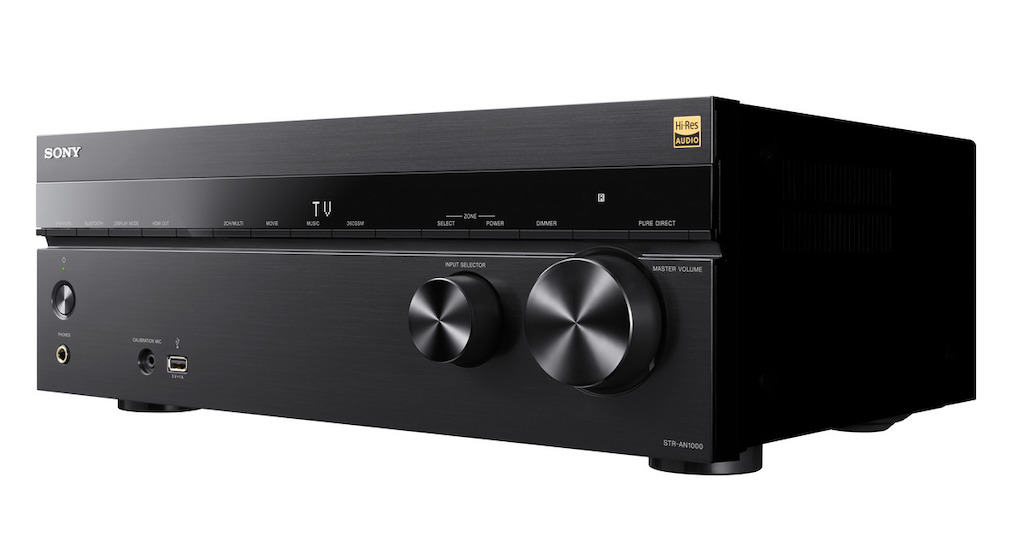
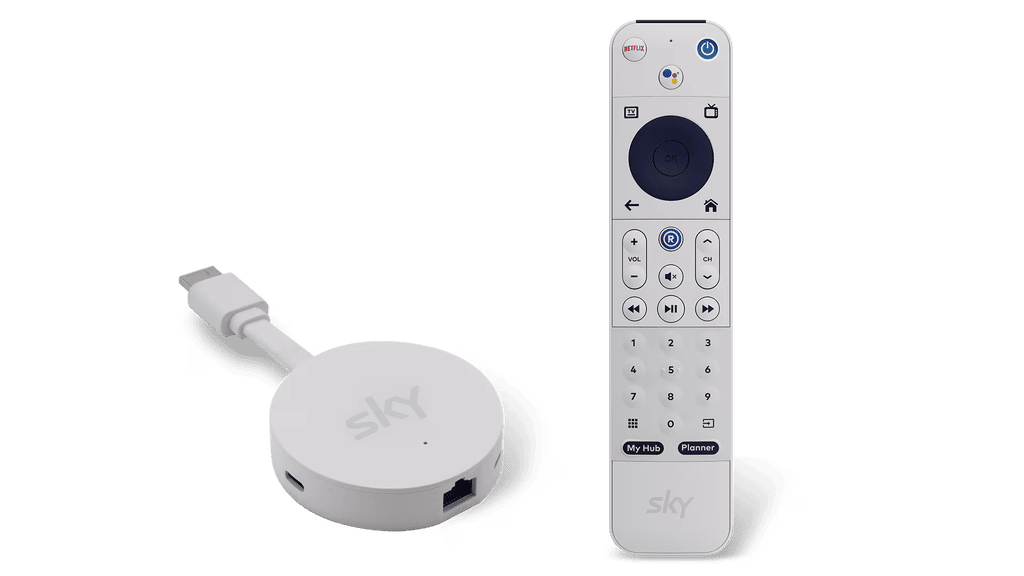

You gave no models to look at so this article was largely unhelpful.